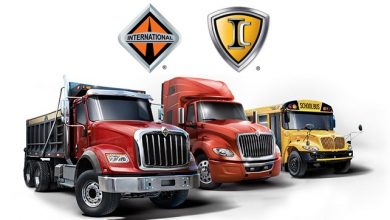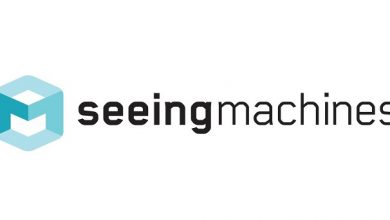Global bus & coach market to reach $145+ billion by 2028

DUBLIN, Aug. 28, 2023 /PRNewswire/ — The “Bus and Coach Market – Global Industry Size, Share, Trends, Opportunity, and Forecast, 2018-2028F Segmented By Vehicle Type, By Transportation Type, By Fuel Type, By Length, By Seating Capacity, By Region, Competition” report has been added to ResearchAndMarkets.com’s offering.
The Global Bus and Coach Market stood at USD97.34 billion in value in 2022. It is expected to reach USD145.19 billion by 2028 with a CAGR of 7.21%.
The expansion of infrastructure, particularly road networks and transportation hubs, directly impacts the demand for buses and coaches. The demand for dependable and sustainable public transportation options increases as nations spend on building their transportation infrastructure.
Global Bus & Coach Market Overview
Buses are medium and heavy vehicles made for a daily commute and city travel. The buses have comfortable seats, but they won’t provide that much support for long-distance travel. Furthermore, people widely use buses to commute to work, colleges, schools, and other destinations.
Designers create coaches for long-distance travel. They have more comfortable seats compared to buses. People can recline them and take rest and also catch a nap for several hours journey without straining their bodies.
Global Bus & Coach Market Drivers
The automotive industry will benefit from government support as regions take initiatives to boost the sector and grow economies. This is expected to increase the sales of buses and coaches globally. Particularly as governments implement initiatives and subsidies to promote sustainable public transportation solutions.
Electric buses, classified as Zero Emission Vehicles (ZEV), are increasingly popular for eco-friendly transportation due to environmental concerns. The bus and coach industry must also adopt greener technology. This includes electric and hybrid buses, due to stringent emission laws enacted by governments and regulatory agencies worldwide.
The popularity of mobility-as-a-service is increasing, as people view transportation as a service rather than owning a vehicle. This has driven demand for buses and coaches, particularly in urban areas where they are integrated into Mobility as a service (MaaS) platforms alongside other forms of transportation.
Technological advancements have revolutionized the bus and coach industry, with integrated systems such as real-time fleet management, GPS tracking, and passenger information systems enhancing operational efficiency and improving the overall passenger experience.
Global Bus & Coach Market Trends
Advancements in digitization have made it easier for people to stay connected. This shift from offline to online technology has led to the development of various services. These services include online ticket booking and real-time tracking of rides, making public transport, including buses, more convenient and reliable.
Major bus companies are increasing their R&D budgets to enhance the quality of public transport, from comfortable seating with lumbar support to improved suspensions. These improvements are attracting more people to use public transport for long-distance travel.
For instance, from 2012 to 2020, Europe deployed approximately 150 fuel cell buses. Companies dealing in advanced green buses in the bus and coach market anticipate deploying over 1,200 fuel cell buses by 2025, which will create growth opportunities.
Additionally, electric buses and coaches are classified as zero-emission vehicles (ZEV), as they run on battery-fitted electric motors and do not emit CO2 or use alternate fuels. Consequently, governments across all regions are introducing subsidies for electric vehicles due to increasing pollution concerns. Due to the above-mentioned factors, the demand for buses and coaches is likely to grow in the coming years.
Global Bus & Coach Market Challenges
One of the major challenges for OEMs is to meet different vehicle specifications and emission standards. For instance, in Europe, in past years, the emission norms have kept changing to Euro IV (2005-08), Euro V (2008-12), and Euro VI (2012-19), etc. Moreover, different countries across the globe have new targets for 2020-25 and 2025-30.
Developed nations follow different emission standards, whereas developing countries have no specific emission norms. This poses a problem for the key global OEMs to develop a single product. Moreover, this factor has created a barrier for emerging market players to expand globally in different regions due to stricter emission norms and regulations. This has thereby limited the supply of buses.
One of the major restraining factors for the global bus and coach market is the rising penetration of passenger cars globally. This is due to the growing demand for personal ownership of vehicles in the COVID-19 scenario and the increasing deployment of cars in shared mobility.
The mobility scenario is changing as a result of the emergence of ride-sharing services, micro-mobility choices, and the continued development of autonomous vehicles. Additionally, there has been a higher penetration of passenger cars in the shared mobility space. Overall, such factors provide challenges to the bus and coach industry, which, in turn, can affect market growth during the forecast period.
Global Bus & Coach Market Opportunities
The global bus & coach market offers several growth and innovation opportunities. In the past few years, a number of brands in the bus & coach market, including Volvo, MAN & Daimler, have increased their product range. The development of electric buses & coaches, which are considered zero-emission vehicles (ZEV), has increased significantly in the past few years.
By 2030, projections suggest that the cost of electric buses will be approximately equal to that of diesel fuel buses. This has created many opportunities for new players in the market in terms of battery manufacturing, charging infrastructure installation, etc.
In order to speed up the introduction of electric buses in the market, governments in many countries are introducing policies and frameworks. These initiatives aim to encourage the introduction of vehicles with a lower environmental impact and lower energy consumption. Moreover, industry experts anticipate that the demand for buses and coaches will continue to grow in the upcoming years.





